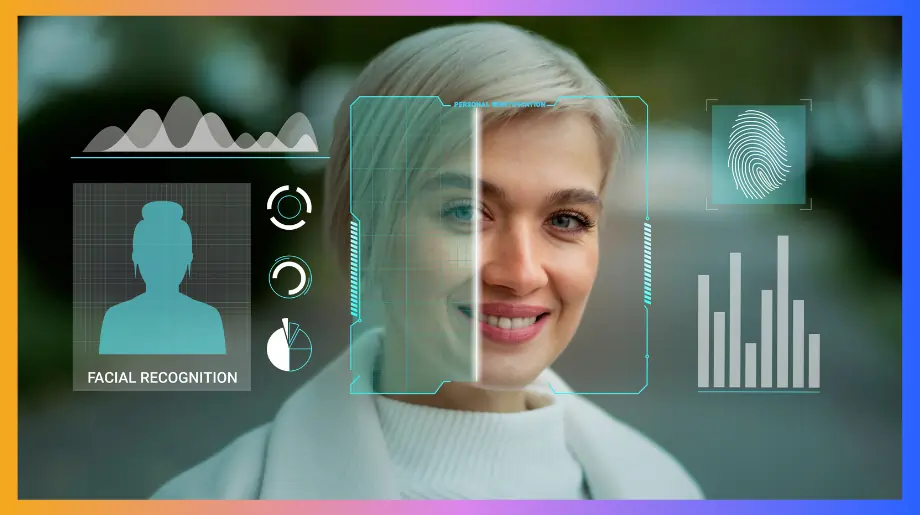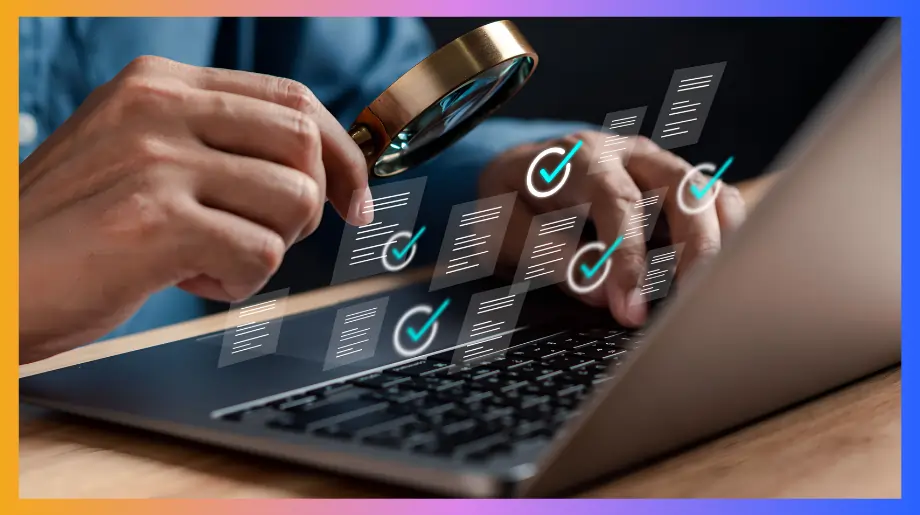Your IT team handles password requests all day. Employees forget logins constantly. Help desk tickets pile up fast.
You manage hundreds of business apps. Each app needs separate passwords. This creates security gaps everywhere.
Hackers target weak passwords first. Your company data stays at risk. Compliance audits find these problems quickly.
SAML 2.0 solves your access challenges.
Your users log in once. They reach all apps safely. No more password chaos.
Your security gets stronger. IT workload drops down.
What is SAML?
SAML stands for Security Assertion Markup Language. It is an XML-based open-standard for transferring identity data between two parties: an identity provider (IdP) and a service provider (SP).
One login gives access to everything.
Here's why businesses choose SAML for their security needs:
- SAML centralizes user authentication with an identity provider. Web applications can then leverage SAML via the identity provider to grant access to their users.
- SAML uses XML technology to carry user information safely. It never exposes actual passwords which protects against hackers.
- Your IT team manages users from one central place. This reduces help desk tickets and shows who accesses applications.
What is SAML 2.0 and How is it Different from SAML?
SAML 2 is an improved version of the original SAML with better security features. These improvements make SAML 2.0 the modern choice for enterprise security.
SAML 1.1 focused on basic single sign-on. It worked with simple web applications. The protocol had limited authentication options. User data sharing was basic.
SAML 2.0 focuses on enterprise-grade security. It works with modern cloud applications. The protocol supports multiple authentication methods. User data sharing is detailed and flexible.
The key differences include enhanced authentication methods and better user data sharing:
- SAML 2.0 has better login features than SAML 1.1. It supports different authentication methods that work for various business needs.
- SAML 2.0 includes a logout feature where users exit all apps. This protects your data properly with one click.
- Your company gets better ways to share user information. You send detailed user data between systems while meeting legal requirements.
SAML 2.0 Architecture and Key Concepts
SAML 2.0 has five main components that work together. Understanding these parts helps you build better security systems. These components ensure secure authentication and smooth user experience:
SAML 2 Assertions
Assertions work like digital ID cards that carry verified information. They move between systems to prove user identity. Assertions contain different types of statements that provide specific information.
These components make secure authentication possible:
- Authentication statements confirm login details. They tell apps when you logged in and how you proved your identity.
- Attribute statements carry user information. They include your name, email, department, and role that apps need for access decisions.
- Authorization statements define access permissions. They tell apps exactly what resources you can or cannot access.
SAML 2 Protocols
Protocols handle communication between your login system and apps. They manage the technical exchange of login information.
These protocols ensure smooth authentication flow:
- Authentication Request Protocol lets apps ask for user verification. They check user credentials using standard XML messages that work.
- SAML Response Protocol sends back success messages or error details. This helps apps make proper access decisions for users.
- Single Logout Protocol makes sure users exit all apps together. They stop unauthorized access when people finish work sessions.
SAML 2 Bindings
Bindings define how SAML messages travel between systems. They ensure secure communication across different network setups.
These methods handle message delivery properly:
- HTTP POST Binding lets apps exchange SAML messages safely. It uses secure form submissions that work with different networks.
- HTTP Redirect Binding enables simple message exchanges using website links. This works great for basic login flows without complexity.
- SAML SOAP Binding provides business-grade message exchange with strong handling. It works for important login processes that cannot fail.
SAML 2 Profiles
Profiles show how users and systems interact during login. They ensure smooth experiences while maintaining security.
These guidelines control user authentication flow:
- Web Browser SSO Profile shows how users move between apps. They use page redirects while keeping experiences smooth and secure.
- Identity Provider Discovery Profile helps apps find the right source. This makes access easier for companies with multiple systems.
- Single Logout Profile coordinates logout across all connected apps. This protects your company when users end work sessions.
SAML 2 Metadata
Metadata contains important configuration information that helps systems trust. It removes manual setup errors from your implementation.
These files handle system configuration properly:
- Setup files contain website addresses, security certificates and features. This makes it easier to create secure connections between systems.
- You can share setup files during the installation process. This makes sure all systems understand each other's needs properly.
- Regular setup updates help maintain trust relationships over time. This happens when certificates expire or system settings change.
How Does SAML 2.0 Work?
SAML creates trust between your login system and apps through a simple process. Users never share passwords directly with service providers. This authentication process works through these steps.
Step 1: User Requests Access
- The user tries to access an app that needs login. The app checks if the user has a valid session already.
- The app finds no active session. It redirects users to the company's identity provider for authentication.
Step 2: Identity Provider Authentication
- The login system receives the authentication request. It presents a login screen to the user if not authenticated.
- The user enters credentials on the identity provider. System validates username and password against directory.
Step 3: SAML Response Creation
- The login system checks user credentials and creates signed certificates. These contain user identity and authentication details.
- Identity provider generates SAML assertion with user attributes. Digital signature protects assertion integrity during transfer.
Step 4: Response Validation
- The app receives these certificates and checks the digital signatures. This makes sure login information comes from a trusted source.
- App validates assertion timing and certificate authenticity. Users get access to requested resources upon successful validation.
SAML vs Single Sign-On (SSO)
When to Use SAML vs. Other Protocols (OIDC, OAuth)?
Picking the right login method depends on your business needs. Your technical requirements and app types matter most.
Learn more about SAML and OAuth to understand key differences.
Benefits of Using SAML 2.0 in Enterprise Security
SAML 2.0 improves security and reduces costs for business. These benefits directly impact your company's bottom line. Here's how SAML helps your organization:
- SAML based SSO reduces password-related security problems completely. Users don't need to create multiple passwords across different apps or systems.
- Central login gives you a complete view of access patterns. This helps you spot suspicious activities and stay compliant with requirements.
- Your IT support costs go down when users stop forgetting. This frees up your team to focus on important security work.
- Enhanced security protocols protect against cyber threats effectively. SAML enables Zero Trust architecture with multifactor authentication across all applications.
- Compliance becomes automated for regulatory requirements. SAML provides detailed audit trails for GDPR, HIPAA, and industry standards automatically.
- User productivity increases dramatically with seamless access flow. Employees log in once and move between applications without delays or friction.
- Risk management improves significantly across your organization. SAML pushes identity responsibility to specialized providers while maintaining your access control policies.
Common Challenges and Limitations of SAML 2.0
Learning SAML protocols problems helps you plan better implementations. You want to get maximum benefits for your company. These common challenges need proper planning and preparation:
- XML complexity can make SAML setups more challenging than alternatives. You need special knowledge for your development team to handle this.
- Clock timing issues between login systems can cause login failures. You need careful system management and monitoring procedures for smooth operation.
- SAML's limited mobile support means you might need extra methods. These work for smartphone and tablet apps your users access.
How IdPs Work in SAML 2.0 Architecture
SAML 2.0 identity providers work as the main login authority. They manage user passwords and create secure certificates for apps.
Here's how identity providers function in SAML architecture:
Step 1: User Authentication
- Your login provider stores and checks user passwords safely. It applies login rules like multi-factor authentication and gives certificates to apps.
Step 2: Certificate Creation
- Login providers create signed certificates with user details and information. These include login information and permission data that service providers need.
Step 3: Trust Management
- Login providers keep trust relationships with service providers through exchanges. Only approved apps can request user login through this system.
SAML 2.0 Best Practices for Implementation
Following proven SAML 2.0 implementation strategies helps you avoid mistakes. You'll deliver reliable login experiences for users and applications. These best practices ensure successful deployment and long-term security:
- Set up proper certificate management procedures with regular schedules. Use SHA-2 certificates from trusted authorities. Never use self-signed certificates in production.
- Use HTTPS for all SAML communications and set up checking. Your minimum standard should be TLS 1.2. Avoid SSL v2, SSL v3 completely.
- Plan for disaster recovery situations with backup login providers. Use failover procedures so login remains available during system problems and outages.
- Enforce signed and encrypted SAML assertions using XML Signature standards. Validate all signatures with trusted certificates for your application security.
- Implement continuous monitoring with automated alerts for failed authentication attempts. You need comprehensive logging for security audits and compliance requirements.
- Maintain detailed documentation covering configurations and troubleshooting procedures. Document IdP settings, SP integrations, and conduct regular security assessments.
SAML 2.0 Authentication with Infisign
Infisign gives you advanced SAML 2.0 authentication with AI features and zero-trust security. Built on Zero Trust Framework (ZTF), Infisign checks user identity. Choosing the right SSO provider ensures secure, seamless access to all your enterprise applications through centralized authentication.
No passwords are used or shared. The platform gives complete identity management for business security needs:
- AI helper automates requests for access based on job roles. Rules that you set reduce manual IT work.
- Passwordless login requires an encrypted password vault feature. Supports OTPs push alerts and biometric login.
- MPWA (Managed Password Authentication) gives users access to old apps. Works with web apps that don't support SSO methods.
- Besides SSO, Infisign lets you use flexible multi-factor authentication. Methods include biometrics, OTPs, device keys and push alerts.
- SAML gives secure single sign-on access to business apps. Cloud services reduce password problems across your company.
- attribute -driven lifecycle automation makes adding and removing access faster. Cuts manual IT work and errors for users.
- Real-time permission syncing gives or removes access. Each lifecycle event stops orphaned or over-privileged accounts.
- Infisign's SSO gives access to on-site apps via cloud. Network Access Gateway gives complete security coverage.
Ready to cut IT support costs by 60% and eliminate password-related security breaches?
Infisign's SAML 2.0 solution gives you enterprise-grade authentication with passwordless access across all your business apps.
Book your Infisign demo today to transform your security architecture.
FAQs
What is SAML 2.0 used for?
Single sign on means one login for all your business apps. It saves time and keeps access easy for your team. SAML 2.0 authentication makes this possible by sending user identity to the apps. The user logs in once, then uses every app without logging in again. No password chaos. No confusion. You control access from one place and know who logs in. This keeps your data safe and your system clean.
Is SAML 2.0 the same as SSO?
SAML2 is a protocol that implements SSO functionality properly. SSO represents the user experience goal while SAML provides the framework. This framework makes seamless authentication possible across multiple applications.
Is SAML the same as LDAP?
SAML and LDAP serve different purposes in identity management. LDAP provides directory services and stores user information safely. SAML authentication handles authentication and authorization between different systems.





















